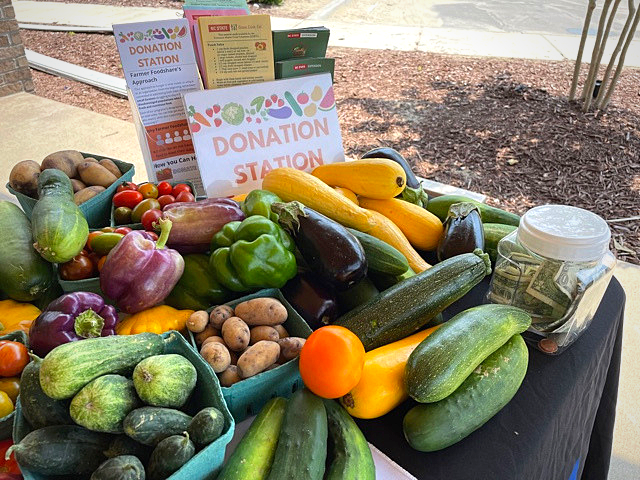Farm to Food Bank Resource Guide and Healthy Food Pantry Toolkit
go.ncsu.edu/readext?862499
en Español / em Português
El inglés es el idioma de control de esta página. En la medida en que haya algún conflicto entre la traducción al inglés y la traducción, el inglés prevalece.
Al hacer clic en el enlace de traducción se activa un servicio de traducción gratuito para convertir la página al español. Al igual que con cualquier traducción por Internet, la conversión no es sensible al contexto y puede que no traduzca el texto en su significado original. NC State Extension no garantiza la exactitud del texto traducido. Por favor, tenga en cuenta que algunas aplicaciones y/o servicios pueden no funcionar como se espera cuando se traducen.
Português
Inglês é o idioma de controle desta página. Na medida que haja algum conflito entre o texto original em Inglês e a tradução, o Inglês prevalece.
Ao clicar no link de tradução, um serviço gratuito de tradução será ativado para converter a página para o Português. Como em qualquer tradução pela internet, a conversão não é sensivel ao contexto e pode não ocorrer a tradução para o significado orginal. O serviço de Extensão da Carolina do Norte (NC State Extension) não garante a exatidão do texto traduzido. Por favor, observe que algumas funções ou serviços podem não funcionar como esperado após a tradução.
English
English is the controlling language of this page. To the extent there is any conflict between the English text and the translation, English controls.
Clicking on the translation link activates a free translation service to convert the page to Spanish. As with any Internet translation, the conversion is not context-sensitive and may not translate the text to its original meaning. NC State Extension does not guarantee the accuracy of the translated text. Please note that some applications and/or services may not function as expected when translated.
Collapse ▲Through the Local Food Program Team efforts, a Farm to Food Bank Resource Guide was created to help in the efforts of combating food insecurity in NC. Food insecurity affects over 1.5 million people in North Carolina alone and we are the 10th hungriest state in the US (foodshuttle.org). “Food insecure families often rely on food pantries or other food security organizations to supplement or stretch their food budgets. Increasing the availability of fresh, healthy, and nutritious food options at local food pantries can help improve the diets and health of food pantry clients, while also empowering them to make healthy choices,” (Farm to Food Bank Resource Guide).

Packing Tatsoi as part of the Farm to Pantry Project in Rutherford County
The Farm to Food Bank Resource Guide was designed to help Extension professionals learn about the opportunities for increasing farm to food bank donations by facilitating the relationship between growers, gardeners, food banks, food pantries, and donation recipients. Included in the guide is an overview of food banks and food pantries to help understand the structures and where programs and projects fit into the different tiers. The guide goes on to share about Direct to Food Bank and Food Pantry Donations, Gleaning, Venison Donation Programs, Extension Master Gardener Volunteers and Community Gardens, Food Pantry Produce Markets, and the 4-H Embryology Project.
The Healthy Food Pantry Toolkit is another great resource for Extension agents to learn about resources that can support the work with food banks and pantries. It is housed on the Local Food Portal and shares information about programs and topics such as local food procurement, food safety, nutrition education and cooking support, and policy, systems, and environmental changes. The Farm to Food Bank Resource Guide is a part of the Healthy Food Pantry Toolkit.

Donation Station Table at the Wilmington Farmers Market at Tidal Creek in New Hanover County


